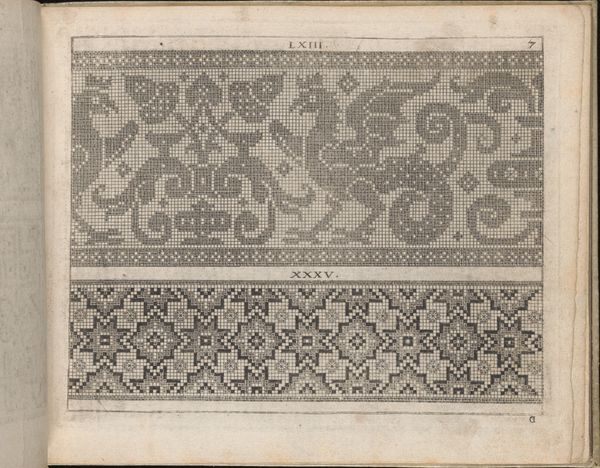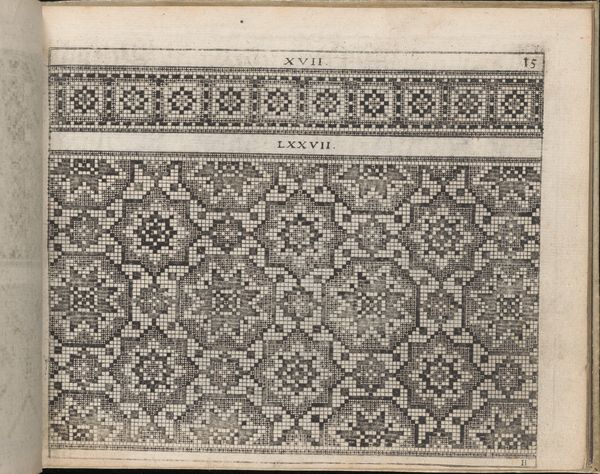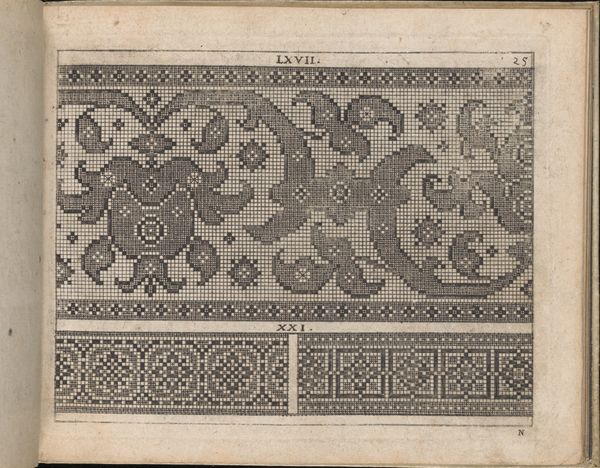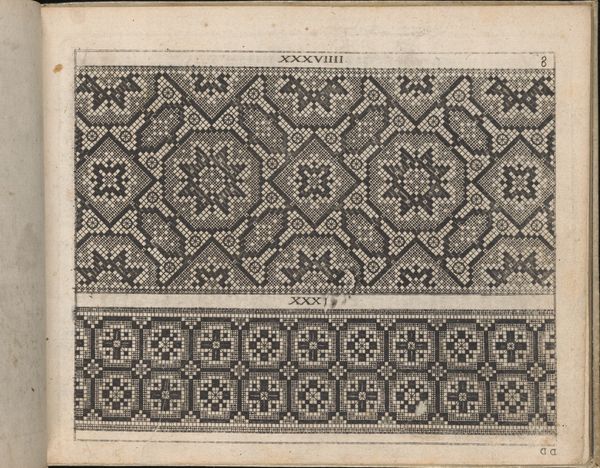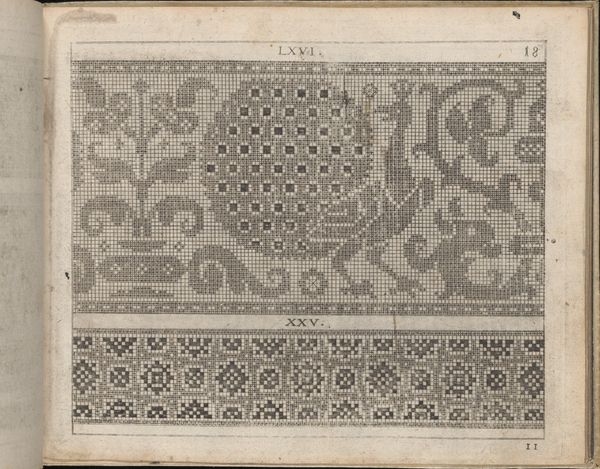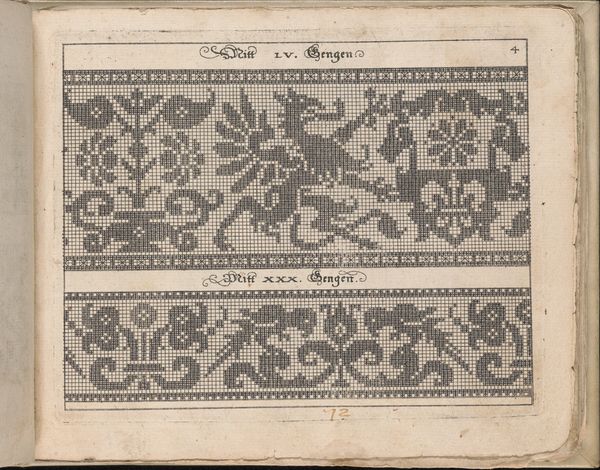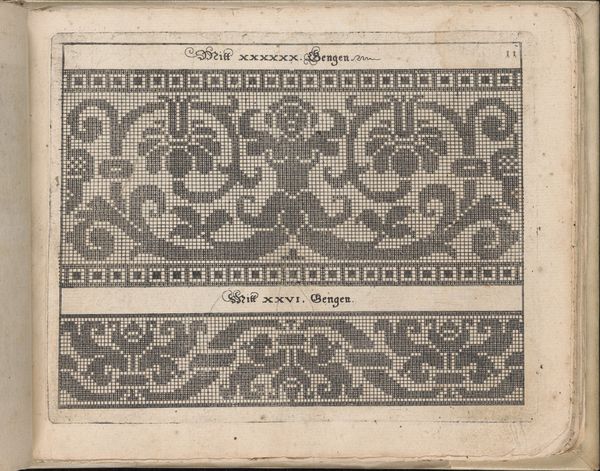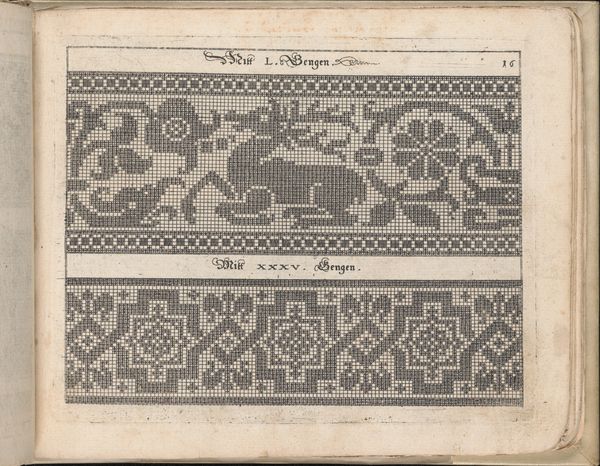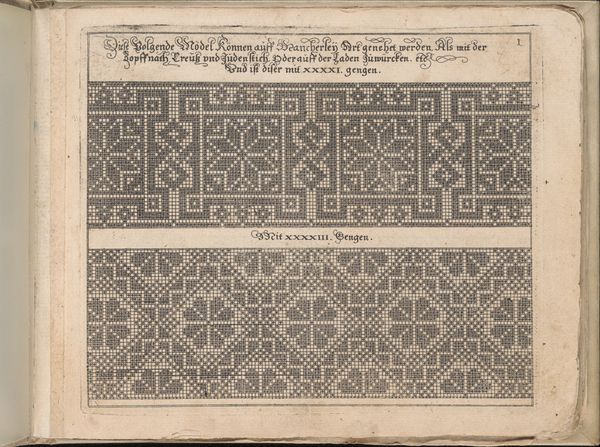
drawing, graphic-art, ornament, print
#
drawing
#
graphic-art
#
ornament
# print
#
book
#
bird
#
11_renaissance
#
geometric
Dimensions: Overall: 5 11/16 x 7 1/16 x 3/4 in. (14.5 x 18 x 1.9 cm)
Copyright: Public Domain
Curator: Here we have a page, specifically page 20r, from Johann Sibmacher’s "Newes Modelbuch in Kupffer," created in 1604. This book, now housed at the Metropolitan Museum of Art, exemplifies the ornamental printmaking of the Renaissance. Editor: My immediate impression is one of intricate precision. The density of the patterns and their geometric foundations suggest the detailed labor inherent in their creation, doesn't it? A kind of coded language emerges. Curator: Precisely. "Modelbuchs" like this were pattern books, tools for artisans – embroiderers, lacemakers, and other needleworkers - across Europe. They provided designs which would be replicated in textiles and other crafts. This book serves as a visual record of early modern aesthetic preferences. Editor: Absolutely. The grid is particularly striking. It feels almost like an early form of data visualization, reducing complex forms like that bird into digestible units. Do you see any deeper significance in the imagery beyond the ornamental? Curator: While their primary function was utilitarian, the imagery and symbols reflect the period's wider cultural preoccupations. Animals, geometric shapes—these were not simply decorative, but laden with symbolism in the early 17th century. The distribution and consumption of designs reflects power dynamics. Who had access to this knowledge? How did that shape gender and class? Editor: And it speaks to a pre-copyright world where cultural motifs circulated more freely, and interpretation and re-appropriation was perhaps valued over originality. These artisans are engaging in acts of imitation, creativity, and knowledge-sharing simultaneously. What impact would these designs have had across different socio-economic boundaries? Curator: A good question. By studying the adaptation of these patterns in different contexts, we can chart the cultural flows and transformations that occurred during the Renaissance, and also understand what limitations governed its access. Editor: For me, looking at this print, I see a complex interplay of art, craft, labor, and cultural exchange. A static object reveals these invisible structures when critically examined. Curator: Indeed. Sibmacher's "Modelbuch" is more than just a pattern book; it's a historical artifact reflecting the social and artistic landscape of its time. A fascinating reminder that even seemingly decorative objects hold profound insights.
Comments
No comments
Be the first to comment and join the conversation on the ultimate creative platform.


